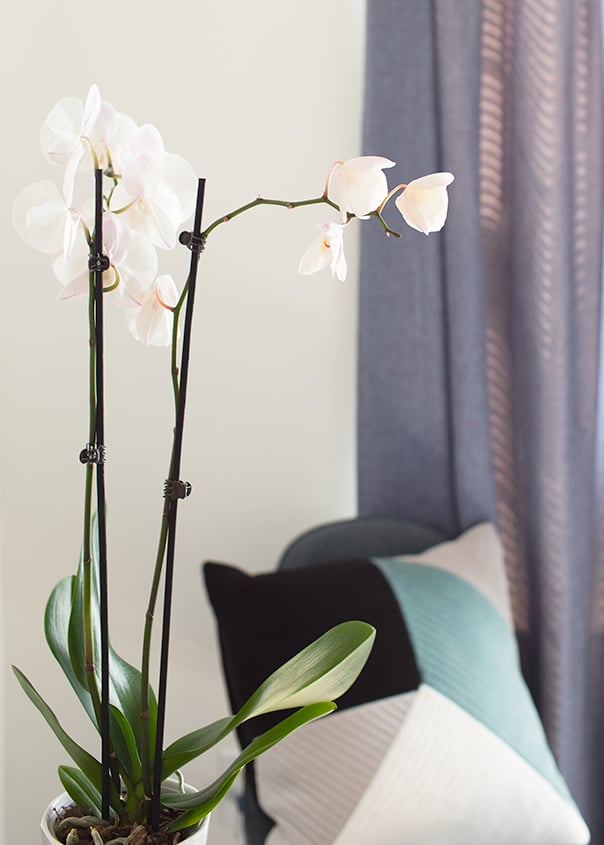Orchid Bloom Loss: Is it Normal?
If you’re a new orchid owner, you were probably so excited to bring home that big, blooming beauty to show off in your home! But new orchid owners are often shocked to find that, despite following their orchid care instructions, the blooms begin to wilt and fall off. In most cases, this is normal: your orchid has reached the end of its blooming cycle and is now storing up energy to rebloom. During this normal phase of resting, the orchid is busy growing new leaves and roots to grow stronger.
However, sometimes bloom loss can signal a bigger problem in the health of your orchid. How can you tell the difference between natural bloom loss and something more concerning? Let’s take a look!
Normal Bloom Loss
- A natural orchid cycle typically sees the growth of leaves in summer and early fall, followed by a bloom spike in late fall or early winter, then blooming in early spring. Some orchids will bloom for several months before the blooms wilt and fall off.
- Since Max & Miles Orchids are grown year round, your blooming cycle might not follow this exact pattern. Instead, you can expect your orchid to bloom for up to three months after your purchase before bloom loss.
- If the blooms on your orchid have a typical lifespan and then slowly wilt and fall off, you have nothing to worry about.
Reblooming Tips
Once your orchid loses its blooms in the natural lifecycle, you have a few options on your next steps.
- Leave it alone and fertilize every 2-4 weeks with a balanced houseplant fertilizer (20-20-20 nutrient ratio) diluted to half strength. The plant may rebloom on the old spike.
- Cut the spike back to an inch above the last triangular node on the stem, which may encourage new bloom growth on the old spike (do this if the spike still seems healthy).
- Cut back the entire spike to the base of the plant, which allows the orchid plant to put energy into the leaves and roots to grow a new spike later (do this if your spike begins to look dark and dried out).
- After a period of rest (at least six months or so), trigger reblooming by moving your orchid to a cooler area with nighttime temperatures between 55-65F. This cooler temperature tricks the orchid into thinking winter is coming and it’s time to reproduce with new flowers!
Bloom Loss Problems
- If the buds of your orchid suddenly fall off before sprouting into blooms, your orchid is probably suffering from bud blast. This is likely preceded by the buds becoming either dry and brittle or softening.
- A similar reaction can happen to your orchid after it has already bloomed, called bloom blast. In this case, the blooms will prematurely dry up and fall off, often quite suddenly.
What Can You Do?
Bud or bloom blast is almost always caused by a change in environment that shocks your orchid, like a sudden temperature change or improper watering. Check to make sure your orchid isn’t near a vent and stick to your watering routine (three ice cubes per week for a 5” diameter orchid).
Another cause of bud blast could be the proximity of your orchid to ripening fruit like bananas or apples, which release ethylene gas. Ethylene makes the blooms wilt and die off, so no orchids near the fruit bowl!
Bud or bloom blast doesn’t mean your orchid is gone forever. You can rebloom it after a period of rest so that it can grow a new spike and blooms.
Reach out to us if you ever have questions about your Max & Miles plants, including your Phalaenopsis orchids. We are here to help every step of the way! Find us on Instagram @maxandmilesplants or email maxandmilesplants@gmail.com to get in touch.








